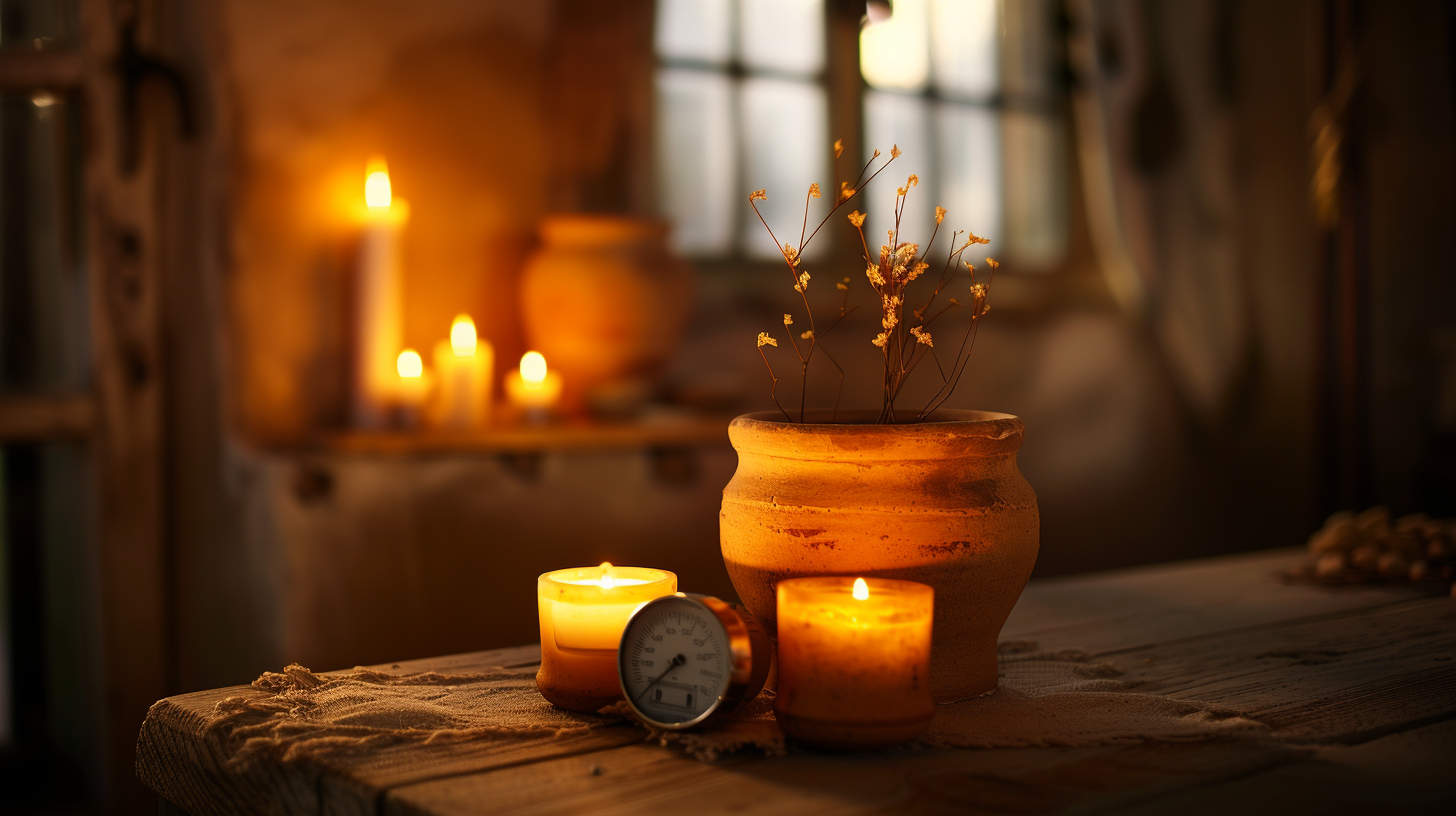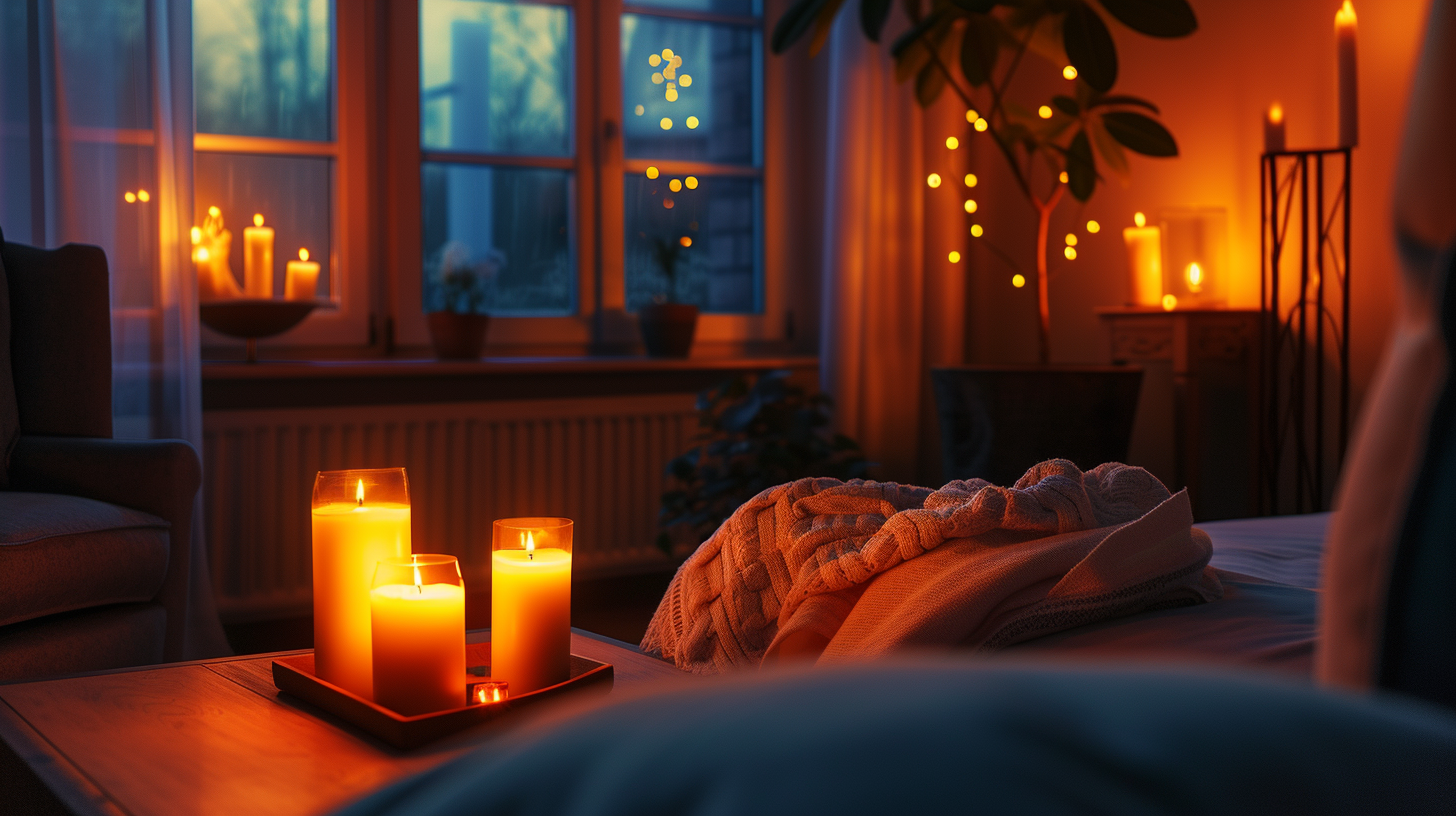Candle Temperature: How Hot Does It Get and Why It Matters
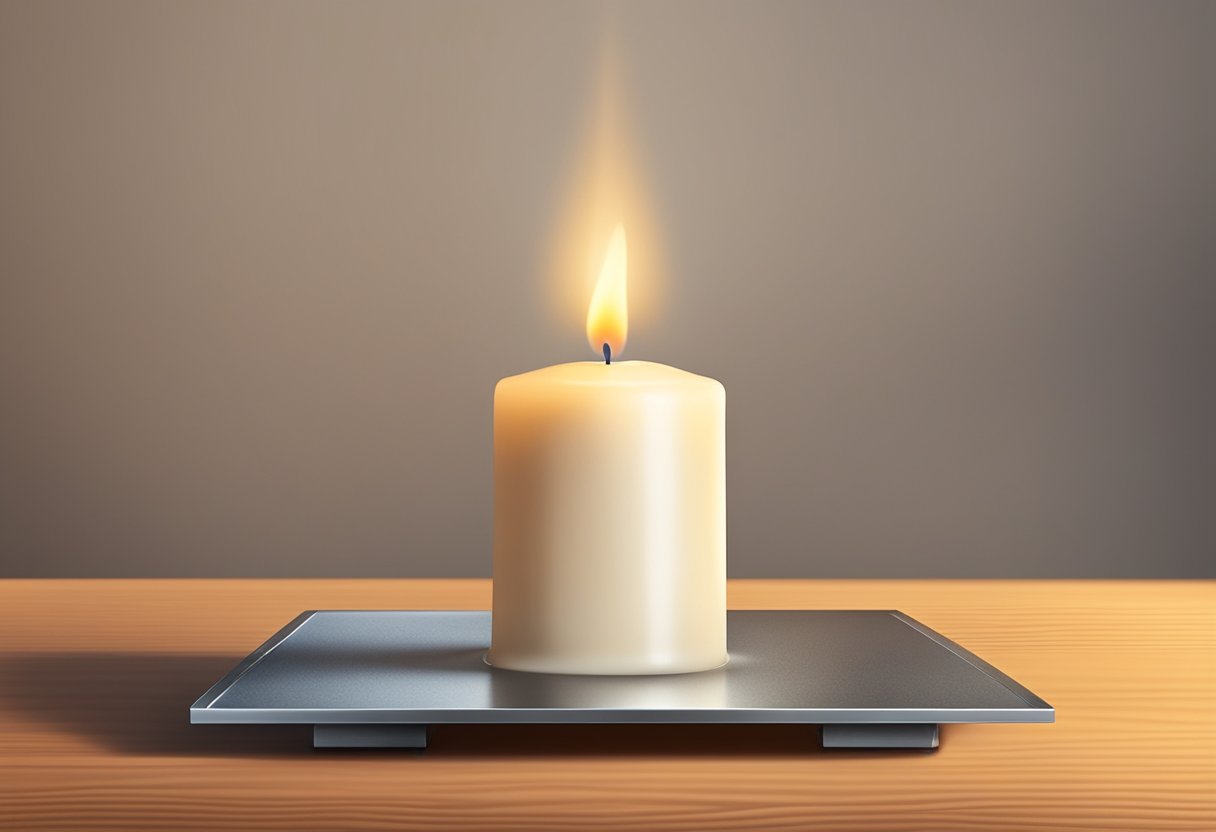
Candles are a popular source of light and ambiance, but how hot do they actually get? A candle flame can reach temperatures as high as 1,832°F (1,000°C), with the hottest part being the innermost layer. This extreme heat is generated by the combustion of the candle’s wick and wax, creating a dazzling yet dangerous display up close.
The temperature of a candle's container can also become quite high during use. Depending on the material, the size of the candle, and the burn time, containers can heat up to 100-140°F. It’s important to always handle candles with care to avoid burns.
Candle warmers, which are devices that keep candles from melting or dripping, also generate significant heat. These warmers typically heat the wax just enough to prevent liquefying while maintaining the candle's fragrance. The heat levels of these devices vary, but they are generally designed to be safe for home use.
Understanding Candle Temperature
Candle temperature is influenced by various factors, including the composition of the candle and the process of burning. It is essential to comprehend these elements to ensure safety and efficiency in candle usage.
Candle Composition and Properties
The wax is a crucial part of any candle. Common types include paraffin, beeswax, and soy wax.
- Paraffin wax melts between 99°F to 154°F.
- Beeswax has a melting point of around 144°F to 147°F.
- Soy wax generally melts between 130°F to 150°F.
The wick also plays a vital role. It draws the liquid wax upward to keep the flame burning. The type of wick and its thickness can change how hot the candle burns.
How the Combustion Process Works
When a candle burns, combustion takes place. The heat of the flame melts the wax near the wick, which is then drawn up by the wick.
The liquid wax turns into hot gas when it reaches the flame. The hydrocarbons in the wax, made up of hydrogen and carbon atoms, combine with the oxygen in the air. This reaction produces carbon dioxide and water vapor and releases energy in the form of heat and light.
Measurement of Candle Flame Temperature
The temperature of a candle flame can be quite high, often reaching between 1,400 and 1,600 degrees Fahrenheit (760 to 870 degrees Celsius).
Different parts of the flame have different temperatures. The blue part at the base is the hottest, while the yellow part at the top is cooler.
Factors like the size of the candle, the type of wax and wick, and the burning conditions can also affect the temperature. Special instruments are used to measure these temperatures accurately.
Understanding these aspects is essential for anyone working with or using candles, ensuring both safety and optimal performance.
Candle Types and Their Heat Characteristics
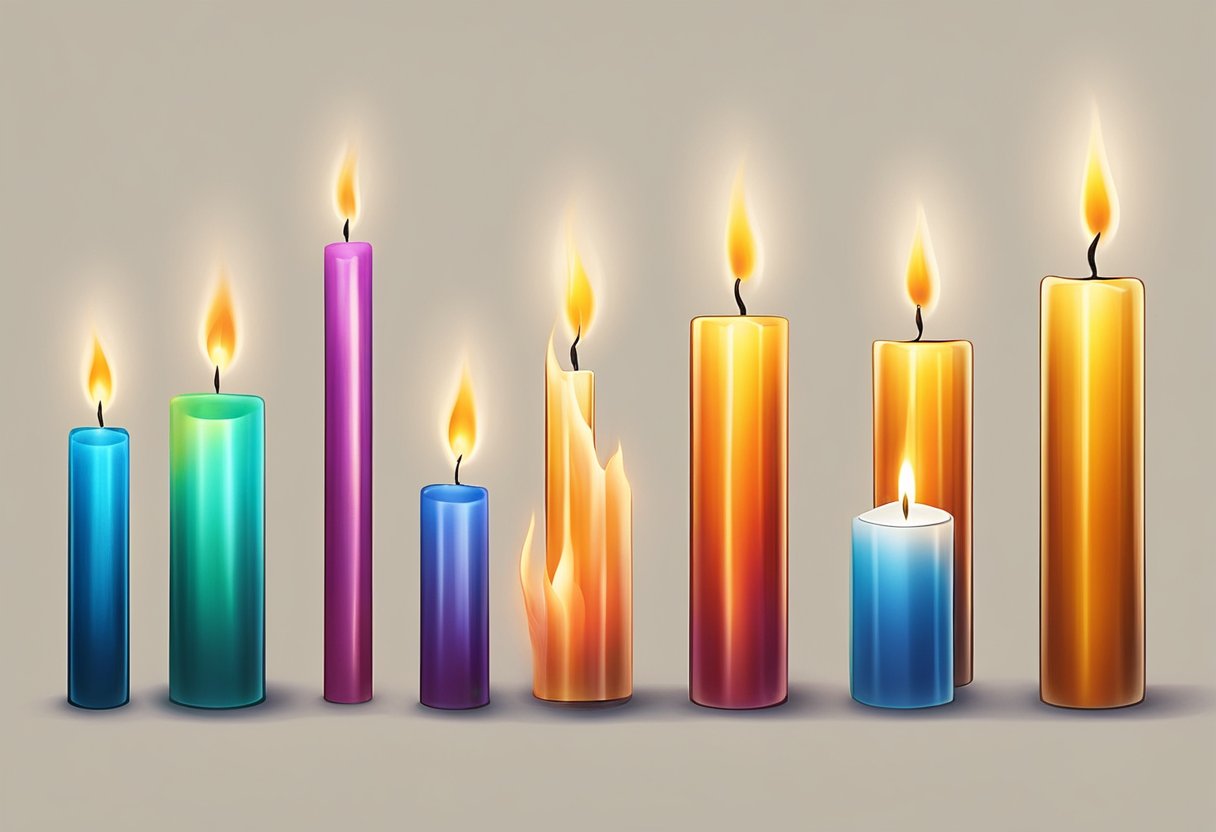
Different types of candles produce varying levels of heat based on their wax type, wick size, and shape. Understanding these factors can help you choose the right candle for your needs and ensure safe burning conditions.
Impact of Wax Type on Heat Output
Paraffin wax is a common choice for candles and melts at around 99°F to 154°F. It generally burns hotter compared to other wax types. Soy wax melts between 130°F and 150°F and has a cooler burn. Beeswax has a higher melting point, between 144°F and 147°F, and burns at a moderate temperature. Each type of wax affects how hot the flame gets and the overall burn quality.
Variations in Wick Size and Material
The size and material of the wick play a crucial role in candle heat characteristics. Thicker wicks typically produce a larger flame and higher temperatures, while thinner wicks yield cooler burns. Cotton wicks are commonly used and provide stable flame temperatures. Metal-core wicks, which contain zinc or tin, can reach higher temperatures but may burn unevenly.
Influence of Candle Size and Shape on Temperature
Candle size and shape also impact how hot a candle gets. Larger candles, such as pillars and large jars, tend to have more substantial flames that generate higher heat. Smaller candles, like votives and tealights, usually produce less heat. The shape matters too; tall, narrow candles like tapers concentrate the flame and can burn hotter compared to wider forms like pillars.
Safety Guidelines for Candle Usage

To enjoy candles safely and avoid potential hazards, follow key safety guidelines. These include proper placement, selecting suitable containers and holders, and using best practices when extinguishing candles.
Preventing Accidents with Proper Candle Placement
Place candles on a stable, heat-resistant surface to prevent tipping and fires. Avoid placing candles near curtains, papers, or flammable items. Always keep lit candles out of reach of pets and children. Maintain at least a one-foot radius of clear space around each candle.
Never leave a burning candle unattended. Extinguish candles before leaving a room or going to bed. Keep track of candle burn time to prevent overheating.
Choosing the Right Containers and Holders
Select containers made of heat-resistant materials like metal, ceramic, or tempered glass. These materials help contain the heat and reduce the risk of the container breaking or shattering. Avoid plastic holders, as they can melt.
Use holders that fit the base of the candle snugly to prevent tipping. Holders with wide bases offer more stability. Use the right size container for each candle to ensure even burning.
Best Practices for Extinguishing Candles
Extinguish candles with a snuffer to avoid hot wax splatters. Do not blow them out, as this can spread sparks. Allow candles to cool before moving them to prevent accidental burns or spills.
Never use water to extinguish a candle, as it can cause hot wax to splatter. Ensure that wicks are trimmed to about ¼ inch before each use to avoid high flames and excess smoke.
Effects of Candle Heat
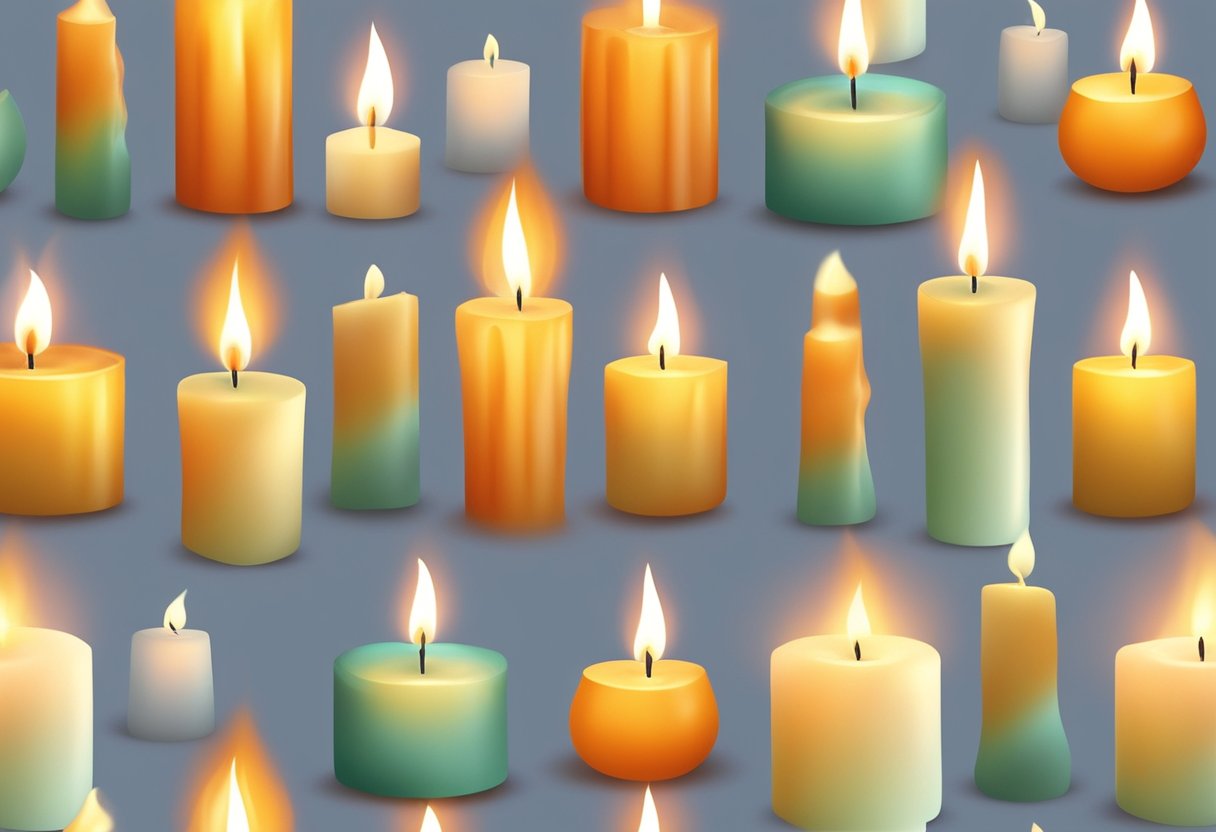
Candle heat affects various aspects of a candle’s performance, including its scent and lighting, as well as its longevity. These factors determine how well a candle fulfills its purpose and how safe it is to use.
Temperature Effects on Scent and Lighting
When a candle burns, the heat it produces can impact its scent and lighting. Scented candles release their fragrance through melted wax near the wick. If the temperature gets too high, the wax may evaporate quickly, leading to a powerful but short-lived scent, known as a strong "hot throw." This intense evaporation might overwhelm small spaces and diminish the overall fragrance experience over time.
Excessive heat can also affect the ambiance created by the candle. A hotter flame can cause the candle to burn unevenly, resulting in excessive flickering or even smoking. This can disrupt the gentle, calming light that candles are usually meant to provide. Keeping candles away from additional heat sources such as radiators can help maintain a consistent burn and light quality.
How Heat Affects Candle Longevity
Candle burn time is significantly affected by the heat it generates and is exposed to. Higher temperatures can cause wax to melt faster, shortening the life of the candle. This is particularly noticeable in candles placed near stoves or in direct sunlight.
For scented candles, maintaining a stable temperature is key to ensuring a prolonged and even release of fragrance. Uneven burning caused by high temperatures can lead to tunneling, where the wax burns down the center, leaving unused wax along the edges. To maximize candle longevity, it is best to burn candles in a controlled environment with moderate temperatures and minimal drafts.
Candle Warmers and Alternatives to Open Flame

When it comes to enjoying candles without the hazards of an open flame, candle warmers provide a safer alternative. They use electricity to heat the wax, making it possible to enjoy the fragrance without a fire risk.
Types of Candle Warmers and Their Heat Emission
Candle warmers come in different styles, each varying in how they emit heat. Plate warmers use a hot plate to warm the candle from the bottom up. The plate can reach temperatures between 100 to 150 degrees Fahrenheit.
Candle lamp warmers use a heat lamp to melt the wax from above. These can get quite hot, with some reaching temperatures up to 200 degrees Fahrenheit.
Lastly, wax warmers are designed for wax melts. These units typically use a low-wattage bulb to warm small portions of wax, providing a gentler heat that's safer for longer use.
Comparing Heat Distribution in Traditional Candles vs. Warmers
Traditional candles generate heat through an open flame. This heat can reach temperatures around 1400 degrees Fahrenheit, quickly melting the wax but posing fire hazards.
In contrast, candle warmers distribute heat more evenly. The heat source melts the wax at a slower rate, which allows the fragrance to be released gradually.
Warmers are also less likely to cause accidents as they don't involve open flames. This makes them ideal for households with children or pets. Additionally, they help make candles last longer since they heat the wax at lower temperatures.
Scientific Insights into Candle Burning
Candles produce heat and light through a combination of chemical and physical processes. Understanding these processes explains how candles generate warmth and illumination.
Chemistry of Candle Flames
Candle flames involve complex chemical reactions. Waxes are hydrocarbons, mostly containing hydrogen and carbon atoms. When a candle is lit, the heat melts the wax near the wick, transforming it into liquid. This liquid wax is drawn up through the wick by capillary action.
The heat from the flame vaporizes the liquid wax, turning it into a gas. This gas reacts with oxygen in the air, creating heat, carbon dioxide, water vapor, and carbon particles (or soot). The visible light from the flame comes from these heated carbon particles.
Physics of Candle Heat Distribution
Heat distribution in a candle flame involves both conduction and convection. The tip of the flame can reach temperatures of up to 2,500°F (about 1,400°C). However, the surface temperature of the burning wax and the container can vary.
An infrared thermometer helps measure temperatures accurately. For instance, containers can reach 100-140°F. The melting point of most candle waxes is around 120-160°F, but it depends on the type of wax used. Understanding these physical properties is key to safe candle use.
Home Decor and Candle Placement
When considering candles for home decor, it’s essential to think about how they can enhance both the ambiance and functionality of a space. Proper candle placement is crucial for maximizing their warmth and lighting without causing issues like spillage or uneven burning.
Enhancing Home Atmosphere with Candlelight and Warmth
Candles can transform any room by adding a cozy and inviting feel. They provide warmth and soft lighting, which makes a space feel more comfortable. Candle holders are not just decorative; they protect surfaces from spills and heat damage.
Selecting the right spot for candles is key. Place them on sturdy, heat-resistant surfaces to avoid accidents. Also, matching the candle style with the room decor can enhance its aesthetic appeal. For instance, elegant holders for formal spaces and rustic ones for a cozy setting.
Candles also contribute to the ambiance by spreading fragrance. Using candles with soothing scents can create a relaxing environment. Always consider the balance between the intensity of the candle's smell and the size of the room to avoid overwhelming the senses.
Strategic Placement for Optimal Heat and Lighting
Placing candles strategically ensures even distribution of light and heat. It’s important to avoid placing them near drafts or air currents, as this can lead to uneven burning and tunneling. This also reduces the risk of fire hazards.
Candles should be positioned where they can provide balanced lighting without casting harsh shadows. For example, placing multiple small candles around a room, rather than one large one, helps distribute light evenly.
Keeping candles away from flammable items is also crucial. This includes curtains, paper, and other easily ignited materials. Using candles on elevated surfaces can also prevent accidents, especially in homes with children or pets.
In addition, considering the candle's height and stability can prevent tipping and spillage, ensuring that the home decor remains both beautiful and safe.

